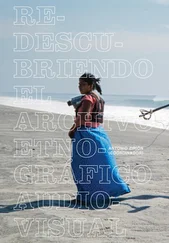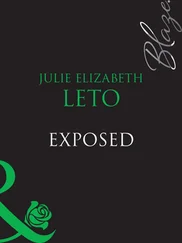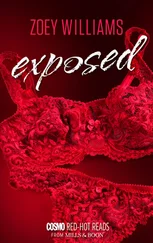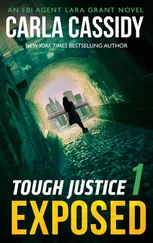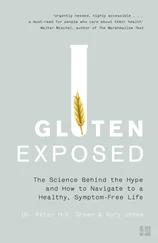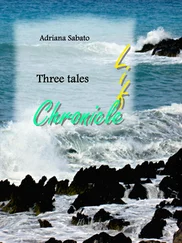I would also like to thank my editor, Mary Murrell, for her clarity and generosity in guiding this book to completion. Others at the Press who have been sources of lively engagement and support include Fred Appel and Paul Olchvary. Special thanks goes to Lauren Lepow for her thoughtful editing and suggestions. Two chapters in this book include parts of essays that have been previously published in Cultural Anthropology , “Sarcophagus: Chernobyl in Historical Light,” 10, no. 2 (May 1995):196–221; and Social Identities , “A Technical Error: Measures of Life after Chernobyl,” 4, no. 1 (1998):73–92.
I am especially grateful to Tania Petryna for her kind logistical support; to Noemia Biehl for her sustained help that ensured final revisions could get done; as well as Michael Petryna, Luba Veverka and family; Ruben and Margarida Kirschner, Fausto and Eliade Biehl, Marina and Edilson Ferraes; Natalia, Oleh, Oksana, and Danylo and families. I also thank Susann Wilkinson, the late Mary Lou Fitzgerald, Torben Eskerod, João Gilberto Noll, and Bob and Lorna Kimball, for clarity into things happening in the field. Most of all, I thank João Biehl. His ethics, acumen, and care were fundamental to the writing of this book. With our son Andre, our life together is what I cherish the most.
Interviews for this book were conducted in Ukrainian, Russian, or English. As scholars of this region know, language is one aspect of social tension in the former Soviet Union. While the legal status of the Ukrainian language was improved in the first years of transition from Soviet rule, Russian continued to be used among the majority of speakers I interviewed, particularly among scientists and physicians. I have tried to respect the language of choice among my informants, providing standard Ukrainian transliteration except for material from Russian-language interviews or published materials.
I employed the Library of Congress system of transliteration, except when another spelling has become commonly accepted in English (e.g., “Chernobyl” instead of “Chornobyl,” “Guskova” instead of “Gus’kova”). Place names in Ukraine have been transliterated from Ukrainian (Kyiv rather than Kiev) according to rules established by the Ukrainian Legal Terminology Commission. I rely on pseudonyms for the majority of people interviewed in this book. However, names that appear in scientific and legal print are in some cases actual.
Chapter 1
Life Politics after Chernobyl
On April 26, 1986, Unit Four of the Chernobyl nuclear reactor exploded in Ukraine, damaging human immunities and the genetic structure of cells, contaminating soils and waterways. The main reason for the accident is by now well known. Soviet engineers wanted to test how long generators of Unit Four could operate without steam supply in the case of a power failure. [1] “The purpose of the experiment was to test the possibility of using the mechanical energy of the rotor in a turbo-generator cut off from steam supply to sustain the amounts of power requirements during a power failure” (IAEA, Soviet State Committee on the Utilization of Atomic Energy 1986:16).
During the test, operators sharply reduced power and blocked steam to the reactor’s generators and disabled many of its safety systems. A huge power surge followed, and at 1:23 A.M. the unit exploded once and then again. Large-scale pressure gradients carried the radioactive plume to as high as eight kilometers by some estimates. The graphite core burned for days. Helicopter pilots dropped over five thousand tons of boron carbide, dolomite, sand, clay, and lead in an attempt to suffocate the flames of the reactor’s burning core. These interventions are now known to have compounded risk and uncertainty. With suffocation, the temperature of the nuclear core increased. This in turn caused radioactive substances to ascend more rapidly, forming a radioactive cloud that spread over Belarus, Ukraine, Russia, Western Europe, and other areas of the Northern Hemisphere. [2] See Sich 1996. With these and all other compounding factors, “estimates of the long-term health consequences of the Chernobyl accident are uncertain even as to the order of magnitude” (Von Hippel 1991:235).
Eighteen days elapsed before Mikhail Gorbachev, then general secretary, appeared on Soviet television and acknowledged the nuclear release to the populace. [3] By May 2, 1986, short reports were published in local newspapers.
Within that period, tens of thousands of people were either knowingly or unknowingly exposed to radioactive iodine-131, absorbed rapidly in the thyroid and resulting, among other things, in a sudden and massive onset of thyroid cancers in children and adults as soon as four years later. [4] Thirteen thousand children in affected regions absorbed a radiation dose to the thyroid of more than twice the maximum allowable dose for nuclear workers for an entire year. See Shcherbak 1996.
Such onsets could have been curtailed had the government distributed nonradioactive iodine pills within the first week of the disaster. [5] Iodine pills raise the amounts of iodide in the bloodstream so that the thyroid cannot absorb more. The radioactive iodine to which a person is exposed is excreted in the urine.
Contradicting assessments generated by English and American meteorological groups, Soviet administrators downplayed the extent of the plume and characterized Chernobyl as a controlled biomedical crisis. Soviet medical efforts focused on a group of 237 victims selected at the disaster site by Dr. Angelina Guskova; they were airlifted to the acute radiation sickness ward of the Institute of Biophysics in Moscow. Of those, 134 were diagnosed with acute radiation syndrome. Official reports set the death toll at thirty-one workers (IAEA 1991, WHO 1996). Behind such seemingly definite numbers lies a web of scientific, moral, and political uncertainties.
The fact is that over the years, 600,000 or more soldiers, firemen, and other workers, men and women, continued to be exposed to radiation. [6] Estimates vary from 600,000 to 800,000. These workers were recruited from all over the Soviet Union. But the labor pool drew most heavily from Ukrainian and Russian populations.
Many were dispatched to the disaster site to carry out cleanup work ranging from bulldozing contaminated topsoil and disposing it as waste to working in one-minute intervals on the roof of an adjacent unit and shoveling radioactive debris into the mouth of the ruined one. Some of these so-called volunteers referred to themselves as “bio-robots,” a term which suggests that the one-minute rule was not well enforced. Others were relatively well paid to construct the so-called Sarcophagus ( Sarkofag , now simply called the Shelter), a structure enclosing the ruined fourth unit of the reactor and containing 216 tons of uranium and plutonium. Currently, fifteen thousand people work at the now decommissioned power plant or are paid to provide technical assistance in the Zone of Exclusion. The Zone is an area thirty kilometers in diameter circumscribing the disaster site. Access to the Zone is restricted to the plant’s maintenance workers, engineers, health professionals, and researchers.
In 1992, during my first field trip to Ukraine, I met one of the maintenance workers who was on a two-week break from work in the Zone. He lived in a housing complex in Kyiv, Ukraine’s capital, located about eighty miles south of the disaster site. Filled with anger, he said, “Now I’m a ‘sufferer.’” He used the word “sufferer” in reference to a legal category introduced the previous year by a newly independent Ukrainian state for persons affected by the Chernobyl disaster. “I get five dollars a month compensation. What can I buy for that?” [7] The karbovanets (Krb) was Ukraine’s legal tender from 1992 to 1996. Exchange rates per $1.00 US plunged between 1992 and 1993. In March 1992, the exchange rate was 640 Krb:$l. By March 1993, that rate had lowered to 12,610 Krb:$l. Subsequent rates were as follows: 1994—104,200:$ 1; 1995—179,900:$1; 1996—188,700:$1. The hryvna (HRN) replaced the karbovanets at HRN1:Krbl00,000 in September of 1996. The exchange rates were as follows: 1997—1.84:$1; 1998-2.04:$1; 1999—4.13:$1; 2000—5.44:$1.
He said he had no other option but to continue working in the Zone. Because of his work history, no firm outside the Zone would hire him. “This is from radiation,” he said. He lifted his pant-leg and stuck his cigarette through skin that had puckered up to form a ring above his ankle. It was the result, he said, of direct contact with a radiation source, and what clinicians would call a “local skin burn.” “This happened in the Zone… We’re people no one understands, in hospitals, in clinics.” He characterized himself as one of the “living dead.” “Our memory is gone. You forget everything—we walk like corpses.”
Читать дальше



